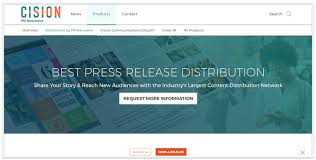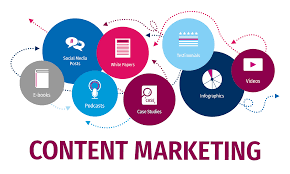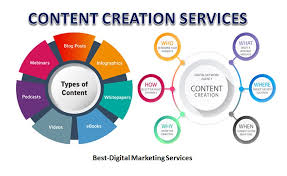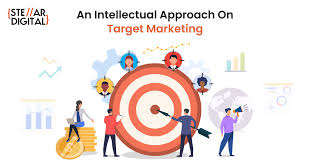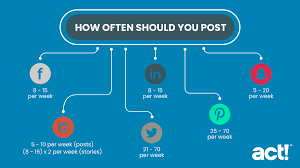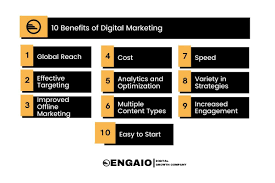Discover the Top PR Wire Services for Your Business: Unveiling the Best Options
The Best PR Wire Services for Your Business
Public Relations (PR) wire services play a crucial role in helping businesses distribute press releases and other important announcements to a wide audience. With so many options available, it can be challenging to determine which PR wire service is the best fit for your business. Here, we explore some of the top PR wire services that can help elevate your brand’s visibility and reach.
PR Newswire
PR Newswire is a well-established PR wire service that offers a wide range of distribution options to target specific industries and regions. With its extensive reach and high credibility, PR Newswire is trusted by many businesses looking to amplify their message and reach key media outlets.
Business Wire
Business Wire is another leading PR wire service known for its global distribution network and comprehensive analytics tools. It provides businesses with the ability to reach journalists, investors, and consumers worldwide, making it an ideal choice for companies seeking maximum exposure.
GlobeNewswire
GlobeNewswire offers a user-friendly platform that allows businesses to easily distribute press releases and multimedia content. With its focus on delivering real-time news updates, GlobeNewswire helps companies connect with their target audience effectively and efficiently.
PRWeb
PRWeb is a cost-effective PR wire service that caters to businesses of all sizes. It offers various distribution packages tailored to different needs and budgets, making it a popular choice among startups and small businesses looking to increase their online visibility.
Cision PR Newswire
Cision PR Newswire combines the power of traditional newswires with modern media monitoring tools to help businesses track their press release performance effectively. With its emphasis on data-driven insights, Cision PR Newswire enables companies to make informed decisions about their communication strategies.
Choosing the right PR wire service can have a significant impact on your business’s visibility and reputation. Consider factors such as target audience, distribution reach, pricing, and analytics capabilities when selecting a service that aligns with your communication goals.
By leveraging the best PR wire services available, you can enhance your brand’s presence in the media landscape and attract the attention of key stakeholders, ultimately driving growth and success for your business.
Top Benefits of Leading PR Wire Services: Enhancing Visibility, Credibility, and Outreach
- Wide distribution network to reach a diverse audience
- Enhanced visibility and exposure for your brand or business
- Increased credibility through association with reputable news outlets
- Ability to target specific industries or regions for more targeted outreach
- Comprehensive analytics tools to track the performance of press releases
- Cost-effective solutions for businesses of all sizes and budgets
- User-friendly platforms for easy distribution of press releases and multimedia content
- Real-time news updates to keep audiences informed and engaged
- Opportunity to connect with journalists, investors, and consumers worldwide
Challenges of Using Top PR Wire Services: Costs, Guidelines, and Distribution Issues
- High cost for premium distribution packages may not be feasible for small businesses with limited budgets.
- Some PR wire services have strict editorial guidelines, making it challenging to get certain types of content approved for distribution.
- Over-reliance on PR wire services can lead to oversaturation of press releases in the market, diminishing the impact of individual announcements.
- Not all PR wire services offer targeted distribution options, resulting in press releases reaching irrelevant audiences.
- Inaccurate or outdated contact lists used by PR wire services can result in press releases not reaching the intended recipients.
- Some PR wire services have limited customer support options, making it difficult to address urgent issues or queries promptly.
- PR wire services may have restrictions on the number of multimedia elements that can be included in a press release, limiting creativity and engagement.
Wide distribution network to reach a diverse audience
One of the key advantages of utilising the best PR wire services is their wide distribution network, which enables businesses to reach a diverse audience effectively. By tapping into these networks, companies can ensure that their press releases and announcements are disseminated to a broad range of media outlets, journalists, investors, and consumers across various industries and regions. This extensive reach helps businesses enhance their visibility, attract new audiences, and generate interest from a diverse group of stakeholders, ultimately contributing to increased brand awareness and engagement.
Enhanced visibility and exposure for your brand or business
Utilizing the best PR wire services can significantly enhance the visibility and exposure of your brand or business. By distributing press releases through reputable wire services, you can reach a wider audience that includes journalists, investors, consumers, and industry influencers. This increased exposure not only helps in generating media coverage but also boosts brand awareness and credibility. With the right PR wire service, your brand can stand out in a crowded marketplace and attract the attention of key stakeholders, ultimately leading to greater visibility and growth opportunities for your business.
Increased credibility through association with reputable news outlets
One of the key advantages of using the best PR wire services is the opportunity to enhance credibility by associating your brand with reputable news outlets. By distributing press releases through established platforms that have strong relationships with trusted media sources, businesses can gain recognition and validation from audiences who value authoritative news sources. This association not only boosts the credibility of the information being shared but also helps to build trust and confidence in the brand among consumers, investors, and other stakeholders. Ultimately, leveraging reputable news outlets through PR wire services can significantly elevate a business’s reputation and position it as a reliable source of information within its industry.
Ability to target specific industries or regions for more targeted outreach
One significant advantage of the best PR wire services is their ability to target specific industries or regions for more focused outreach. By tailoring distribution to particular sectors or geographic areas, businesses can ensure that their press releases reach the most relevant audiences. This targeted approach increases the likelihood of engaging with industry-specific journalists, influencers, and stakeholders who are more likely to be interested in the company’s news and updates. As a result, businesses can achieve higher visibility and engagement within their target market, leading to more impactful communication and greater success in building brand awareness and reputation.
Comprehensive analytics tools to track the performance of press releases
One significant advantage of using the best PR wire services is their provision of comprehensive analytics tools to track the performance of press releases. These tools offer valuable insights into how press releases are being received, allowing businesses to measure the impact of their communication efforts accurately. By analysing metrics such as audience reach, engagement levels, and media pickup, companies can gain a deeper understanding of their target audience’s response and refine their PR strategies accordingly. This data-driven approach enables businesses to make informed decisions, improve future communication campaigns, and ultimately enhance their overall brand visibility and reputation.
Cost-effective solutions for businesses of all sizes and budgets
One of the key advantages of the best PR wire services is their ability to provide cost-effective solutions that cater to businesses of all sizes and budgets. Whether you are a startup looking to establish your online presence or a large corporation seeking to amplify your message, these services offer various distribution packages tailored to different financial constraints. By offering affordable options without compromising on quality and reach, businesses can leverage PR wire services to enhance their visibility and connect with their target audience effectively, regardless of their budget limitations.
User-friendly platforms for easy distribution of press releases and multimedia content
One of the key advantages of the best PR wire services is their user-friendly platforms that facilitate seamless distribution of press releases and multimedia content. These platforms are designed to be intuitive and easy to navigate, allowing businesses to efficiently upload and distribute their important announcements with just a few clicks. By offering a straightforward process for sharing press releases and multimedia content, these PR wire services enable businesses to reach their target audience effectively and maximise the impact of their communication efforts.
Real-time news updates to keep audiences informed and engaged
One of the key advantages of using the best PR wire services is their ability to provide real-time news updates that keep audiences informed and engaged. By distributing press releases and important announcements promptly, businesses can capture the attention of their target audience at the right moment, ensuring that they stay up-to-date with the latest developments. This proactive approach not only helps in building brand credibility but also fosters a sense of transparency and trust with stakeholders. Real-time news updates enable businesses to maintain a dynamic presence in the media landscape, driving audience engagement and enhancing overall communication effectiveness.
Opportunity to connect with journalists, investors, and consumers worldwide
One of the key advantages of using the best PR wire services is the opportunity they provide to connect with journalists, investors, and consumers worldwide. By leveraging these services, businesses can reach a global audience and engage with key stakeholders across different regions. This broad reach not only helps in increasing brand visibility but also facilitates building relationships with media professionals, potential investors, and customers on a global scale. Connecting with a diverse range of audiences worldwide can lead to enhanced credibility, increased brand awareness, and ultimately drive business growth and success.
High cost for premium distribution packages may not be feasible for small businesses with limited budgets.
One significant drawback of the best PR wire services is the high cost associated with premium distribution packages, which may not be feasible for small businesses operating on limited budgets. While these premium packages offer extensive reach and enhanced features, such as targeted distribution and detailed analytics, the price tag can be prohibitive for smaller companies looking to maximise their visibility through press releases. This financial barrier may restrict small businesses from accessing the full range of benefits that top-tier PR wire services offer, potentially limiting their ability to compete effectively in the market and reach their target audience efficiently.
Some PR wire services have strict editorial guidelines, making it challenging to get certain types of content approved for distribution.
Some PR wire services have strict editorial guidelines, which can pose a challenge for businesses looking to distribute certain types of content. These guidelines may limit the scope of acceptable topics or require content to meet specific standards before approval for distribution. This can be frustrating for companies seeking to share unconventional or niche information that may not align with the service’s criteria. As a result, businesses may find it difficult to communicate their message effectively and reach their desired audience through these PR wire services with stringent editorial policies in place.
Over-reliance on PR wire services can lead to oversaturation of press releases in the market, diminishing the impact of individual announcements.
Over-reliance on PR wire services can have a significant downside, as it may result in the oversaturation of press releases in the market. When businesses excessively use PR wire services to distribute their announcements, the sheer volume of content being pushed out can lead to a cluttered media landscape. This oversaturation can diminish the impact of individual announcements, as they may get lost in the sea of other press releases vying for attention. As a result, key messages may fail to resonate with target audiences and stakeholders, ultimately diluting the effectiveness of communication efforts. It is essential for businesses to strike a balance and carefully consider when and how to utilise PR wire services to ensure that their messages stand out and make a meaningful impact amidst the noise.
Not all PR wire services offer targeted distribution options, resulting in press releases reaching irrelevant audiences.
One significant drawback of some PR wire services is the lack of targeted distribution options, leading to press releases being disseminated to irrelevant audiences. This can dilute the impact of the message and reduce the chances of reaching the intended stakeholders effectively. Without the ability to tailor distribution based on specific industries, regions, or demographics, businesses may struggle to connect with their target audience and generate meaningful engagement. It is crucial for companies to carefully assess the targeting capabilities of PR wire services to ensure that their press releases reach the right people and achieve desired results.
Inaccurate or outdated contact lists used by PR wire services can result in press releases not reaching the intended recipients.
An important drawback of using PR wire services is the potential for inaccurate or outdated contact lists, which can hinder the effectiveness of press release distribution. When PR wire services rely on unreliable contact information, there is a risk that press releases may not reach their intended recipients, such as journalists, influencers, or industry professionals. This can lead to missed opportunities for media coverage and reduced visibility for the business’s announcements. Ensuring the accuracy and relevance of contact lists is crucial in maximising the impact of PR efforts and maintaining strong relationships with key stakeholders in the media landscape.
Some PR wire services have limited customer support options, making it difficult to address urgent issues or queries promptly.
One notable drawback of some of the best PR wire services is their limited customer support options, which can hinder businesses from addressing urgent issues or queries promptly. When faced with time-sensitive matters or unexpected challenges, the lack of immediate assistance and guidance from customer support can lead to delays in resolving issues effectively. This limitation in customer support may impact the overall experience and satisfaction of businesses using PR wire services, highlighting the importance of reliable and responsive support channels for seamless communication and problem-solving.
PR wire services may have restrictions on the number of multimedia elements that can be included in a press release, limiting creativity and engagement.
One notable drawback of using PR wire services is that they often impose restrictions on the number of multimedia elements that can be included in a press release. This limitation can hinder creativity and engagement, as businesses may be unable to fully showcase their brand through visuals, videos, or interactive content. With the growing importance of multimedia in capturing audience attention and conveying messages effectively, these restrictions may pose a challenge for businesses looking to create dynamic and engaging press releases that stand out in a crowded media landscape.



